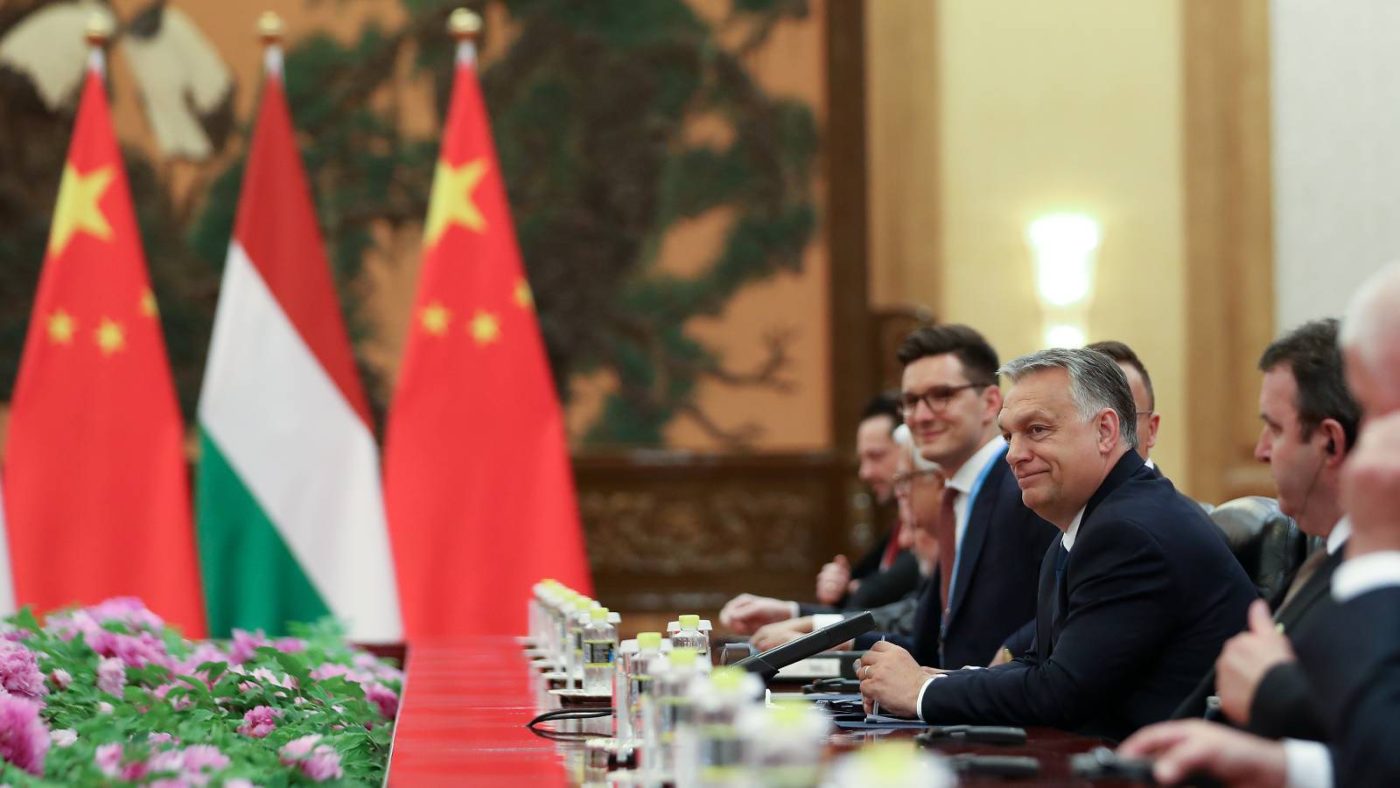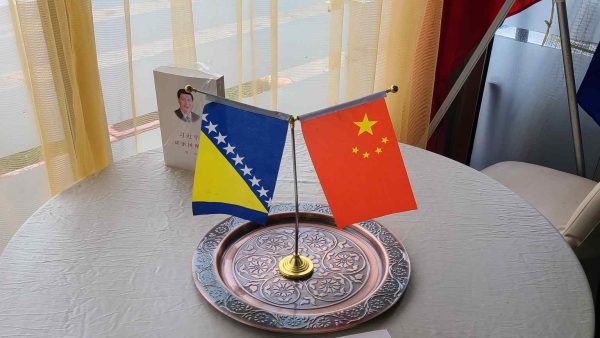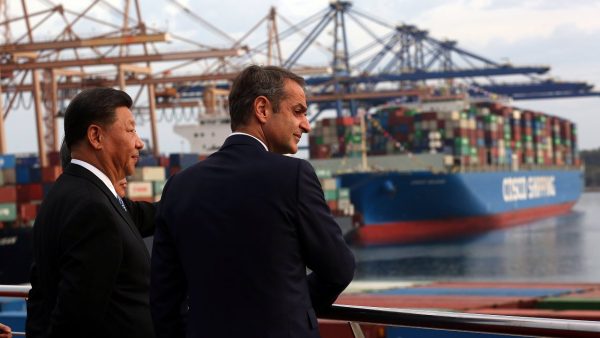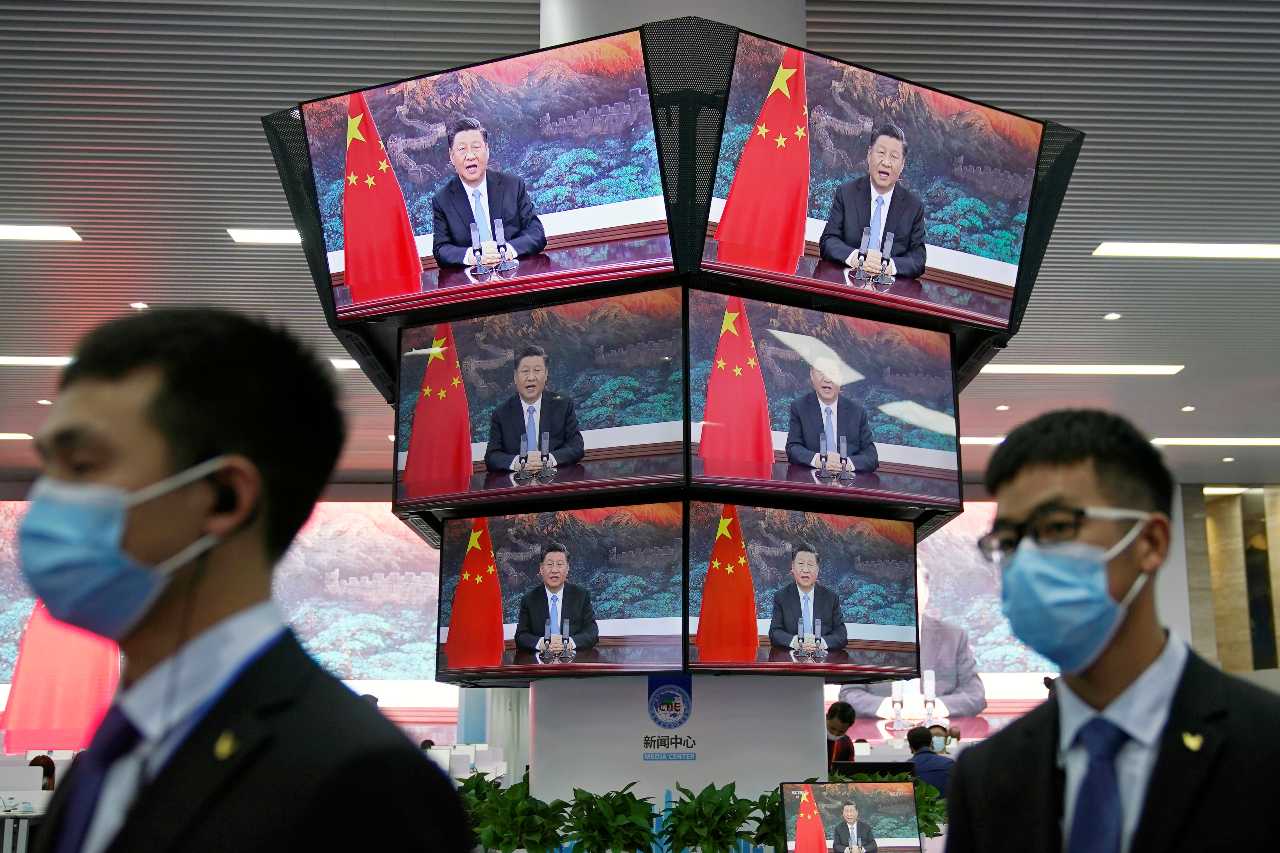This report is a part of #CCPinCEE, a series of reports published by the Center for European Policy Analysis (CEPA) analyzing Chinese influence efforts and operations across the nations of Central and Eastern Europe.
Goals and Objectives of CCP Malign Influence
Given the deep and broad political relationship between Hungary and China, one may expect that China’s influence plays an important role in Budapest’s pro-China stance. Indeed, the Hungarian government has clearly expressed its support for Beijing on some controversial international issues. For example, Budapest’s objection blocked the European Union from issuing a joint communique harshly condemning human rights abuses in China. Also, Hungary was the first EU country to join the disputed Belt and Road Initiative, and the Hungarian government has avoided criticizing Beijing’s militarism in the South China Sea1 . In these cases and others, Budapest has behaved like a Trojan horse in the Western alliance system.
Even so, China does not proactively conduct systematic malign influence operations in Hungary. Its actions are sporadic, its tools are rudimentary and toothless, and the audience China can reach in Hungary is extremely limited. The real source of China’s ostensible influence in Hungary is an odd, corrosive version of soft power; the rule and achievements of the Chinese Communist Party offer an attractive model to Fidesz, the ruling party of Hungary, and its leader, Prime Minister Viktor Orbán.
CCP’s methods, tools, and tactics for advancing malign influence
The Hungarian government’s willing cooperation with Beijing has meant that China has no need to directly influence or actively intervene in Hungary’s domestic debates to change public perceptions. Chinese activities in Hungary over the past decade have generated little classical soft power, and Hungary does not represent a special case in this regard.
In recent years, Hungary has often been accused of selling out the unity of the EU in exchange for business, commercial, and investment advantages with China. Since 2010, the Hungarian government has repeatedly heralded its attempts to increase exports to China, but despite the grand trade announcements, China is still far from one of Hungary’s most important trade partners. China’s share of total Hungarian exports was 1.61% in 2010, barely inching up to 1.72% by 2020.2
When it comes to investment relations, the promised windfall of Chinese capital has never arrived in Hungary, and China’s FDI plays only a marginal role in the country. Even the Hungarian government’s most optimistic estimates suggest that the total amount of Chinese capital is below $4.4 bn, around 4% of the total FDI in the country. In comparison, Japan or the Republic of Korea have invested similar amounts in Hungary, while German investment is around $29.6 bn.3 In sum, trade and investment relations between China and Hungary are so weak that Beijing could hardly use economic measures to coerce or even influence decision-making in Budapest.
The number of Chinese university students in Hungary has grown rapidly, reaching 2,723 in 2020, while their number was as low as 272 in 2010.4 A good many cultural and educational institutions have been established in Hungary, including five Confucius Institutes, a lot for a country of 10 m. These institutions tend to reach only those already interested in Chinese culture, though, while most Hungarians have never heard of Confucius Institutes: officials of one privately acknowledged that the same approximately 500 people in a year show up at their events on a regular basis in 2018. The China–CEE Institute of the Chinese Academy of Social Sciences was established in Budapest in 2017. It publishes briefings on relations between China and Central and Eastern European countries written by local and regional experts paid by the Chinese government. Following a meeting with Orbán, Fudan University announced in 2020 that it would establish a campus in Budapest by 2024. Through Huawei’s Seeds for the Future scholarship, 10 Hungarian university students majoring in information and communication technology programs can visit China every year5 (or at least could before the pandemic), while another major investor, Wanhua-BorsodChem, has offered modest scholarships of $50 to 150 per month for Hungarian chemical engineering students since 2016.6
China has not engaged in a major public diplomacy campaign in Hungary. Duan Jielong, the previous Chinese ambassador, published a few op-eds in a Hungarian daily newspaper and gave interviews to news websites and radio stations. In his public appearances, he thanked Hungary for its help and called for solidarity in fighting the pandemic, generally repeating official Chinese talking points. As to the potential impact of such publications, one op-ed on the embassy’s Facebook page on the day it was published received only two comments, seven shares, and 22 reactions. Duan’s successor, Qi Dayu, has continued the practice of publishing op-eds, contributing six articles to newspapers between April and September 2021. His impact, as well, has been minimal, or even counterproductive, as the number of likes and shares averaged 16.6 and 0.1 respectively per article. Most comments — “Covid virus: made in China,”7 “Paid content by the CCP,”8 “Jesus! As if I was reading Pravda under Krushchev,”8 “Communist scum,”9 etc. — were withering.
Even during the COVID-19 pandemic, China kept a low profile except for a short online brawl with the US Embassy in Budapest. As in most other European countries, the Chinese Embassy in Hungary was a latecomer to Facebook and Twitter, although it has been very active on Twitter since, posting roughly three to five tweets per day. The Chinese Embassy’s social media pages have a small but seemingly growing following, although the overwhelming majority of followers are not Hungarian, or even real people with real profiles. And Twitter itself has only a few thousand active users in Hungary. The Chinese Embassy’s Facebook page, meanwhile, has 1,800 followers and its content almost mirrors its Twitter account, with the same news on Chinese politics, the fight against COVID-19, and the same videos or other news related to the beauty of China, technology, and everyday life.10
Although Hungary is home to the largest Chinese community in the CEE region, the Chinese diaspora does little to shape the image of China, as it barely spreads any news about China in Hungary. The Chinese Embassy in Budapest cooperates with the local Chinese diaspora in organizing cultural events, such as spring festivals, but these are mostly aimed at the Chinese community itself and Hungarians interested in Chinese culture.

Sources: The World Factbook 2022, (Washington, DC: Central Intelligence Agency, 2020), https://www.cia.gov/the-world-factbook/; World Bank, The World Bank Group, 2022, https://www.worldbank.org/en/home; “Hungary-China Friendship Group 2018-2022″, Hungarian National Assembly, Retrieved June 27,2022 https://www.parlament.hu/en/web/house-of-the-national-assembly/individual-members-of-friendship-groups-2018-2022
Reach of influence measures
Despite strong ties between Budapest and Beijing, Hungarians have many reservations about China and its political system. In a 2017 EU-wide survey by Eurobarometer, half of the Hungarian respondents reported negative feelings toward China, compared with 40% with a positive view.11 In a similar survey, only 25% of Hungarians agreed that maintaining strong relations with China serves the interests of their country, while 32% disagreed.12 That was the lowest share among the Visegrad countries, in line with the findings of the China-CEE Institute, whose research suggests that a mere 35% of Hungarians see the relationship between Hungary and China as either close or very close.13
The COVID-19 pandemic has hurt China’s image in Hungary. In a recent survey, 31% of Hungarians said their views on China had deteriorated in the three years prior to September 2020, while only 15% said their perceptions of Beijing had improved.14 Views of China in Hungary run along the lines of domestic political divisions, with voters of the governing right-wing Fidesz party by far the most favorably inclined. Some left-wing voters (Democratic Coalition and Socialist Party) also belong to the pro-China group, while voters of all other parties are suspicious of China.15 As for COVID-19, despite the Hungarian government’s strong push to blame the EU for its failure to fight the pandemic effectively, nearly 65% of respondents surveyed in the fall of 2020 agreed that the EU had helped considerably in the fight against the virus. In comparison, only 55% said China had helped a lot.16
Nor is media coverage of China in Hungary positive, as the MapInfluenCE project has shown. Although general coverage of China from 2010 to 2017 was mostly neutral and focused heavily on the economy and trade, when it comes to articles focusing on political issues, the picture looks very different. There were three times more negative news articles on values and political issues than positive ones in the period analyzed. Furthermore, the proportion of negative news (indicating the polarity of discourse on China) constantly increased and the share of negative articles rose to 15%, against 5% positive news by 2017.17 New research by MapInfluenCE shows that not much has changed in the Hungarian media’s treatment of China since 2017. Government media still run more positive stories on China-related issues than opposition and independent media, even though government media seldom praise China itself. Instead, they emphasize the successes of Hungarian foreign policy in forging closer relations with China and stress the importance of economic and political ties. Of course, the audience of these media sources may develop positive feelings about China itself when they are repeatedly told that having strong relations is good for Hungary.18
Target audiences and populations
As mentioned, the pro-China narrative in Hungary is shaped by the Hungarian government itself and not by the Chinese side. The Orbán cabinet has been emphasizing the importance of China and Sino-Hungarian relations since 2010, and the foreign policy strategies of the government, such as the Opening to the East or Hungary’s accession to the Belt and Road Initiative or the Asian Infrastructure and Investment Bank, all shape a pro-China narrative in governmental communications and in pro-government media. Besides his seemingly genuine admiration of the Chinese system, Orbán may praise China as a contrast to a collapsing West.

Conclusion
In sum, China wields little economic or soft power in Hungary, and it does not aim to gain systematic influence over the media narrative in the country. Given Chinese leaders’ well-known pragmatism, they might not think it necessary to invest heavily in shaping the media discourse in Hungary, as the Hungarian government itself cheerleads for China and has been a reliable partner of Beijing in the EU for over a decade. That, however, could change, should a less China-friendly government come to power in Budapest.
- Thorsten Benner et al., “Authoritarian Advance – Responding to China’s Growing Political Influence in Europe,” Global Public Policy Institute & Mercator Institute for China Studies, 2018. [↩]
- Based on data provided by the Hungarian Statistical Office, available at: https://statinfo.ksh.hu/Statinfo/haDetails.jsp?query=kshquery&lang=hu [↩]
- Tamás Matura,” Chinese Investment in Central and Eastern Europe – A reality check,” Central and Eastern European Center for Asian Studies, April 2021, https://www.china-cee-investment.org/ [↩]
- Central Statistical Office of Hungary, ”Number of foreign students by country of origin,” https://statinfo.ksh.hu/Statinfo/QueryServlet?ha=HC1008 [↩]
- “A Huawei Ismét Meghirdeti Nemzetközi Ösztöndíjprogramját,” Huawei Hungary, June 12, 2015. https://huawei.hu/2015/06/12/a-huawei-ismet-meghirdeti-nemzetkozi-osztondijprogramjat/. [↩]
- “ÖSZTÖNDÍJ Programok,” BorsodChem Zrt, https://karrier.borsodchem.eu/osztondij-programok. [↩]
- Magyar Hírlap. “A covidjárvány még mindig terjed világszerte, és egyre fertőzőképesebb mutációk bukkannak fel folyamatosan, ami még szükségesebbé teszi, hogy a világ országai szolidárisan és együtt nézzenek szembe az akadályokkal,” Facebook, August 31, 2021, https://www.facebook.com/magyarhirlap/posts/4457987244246873 [↩]
- Magyar Hírlap, ”Kína a világ legnépesebb fejlődő országaként hosszú és fáradságos erőfeszítések eredményeként aratott minden téren győzelmet a szegénység elleni harcban,” Facebook, April 27, 2021. https://www.facebook.com/magyarhirlap/posts/4089551101090491 [↩] [↩]
- Magyar Hírlap. ” Orbán Viktor miniszterelnök szerint haza csak addig van, amíg van, aki szeresse. Ezzel mélységesen egyetértek,” Facebook, April 5, 2021. https://www.facebook.com/magyarhirlap/posts/4025560784156190 [↩]
- Tamás Matura, “The Chinese COVID-19 Information Campaign in Hungary: Keeping a Low Profile,” in I. Karaskova et al “China’s Propaganda and Disinformation Campaigns in Central Europe”, MapInfluence, 2020, https://mapinfluence.eu/wp-content/uploads/2020/08/Mapinfluence_BRIEFING-PAPER_chinas-propaganda_A4_interaktivni_EN_01-1.pdf [↩]
- European Commission, “Special Eurobarometer 467 – Future of Europe,” Brussels.: European Commission, 2017. [↩]
- “Public opinion in Hungary, Poland, Czech Republic and Slovakia,” International Republican Institute, 2017. [↩]
- Chen Xin, “How the CEE citizens view China’s development,” Budapest: China-CEE Institute, 2019. [↩]
- The author’s calculations based on: Richard Turcsányi et al. “Sinophone Borderlands 2020 Europe Survey,” Olomouc, Palacky University, 2020. [↩]
- Ivana Karásková et al., “Images of China in the Czech and Hungarian Parliaments,” AMO, Prague, March 2019, https://mapinfluence.eu/en/slaimages-of-china-in-the-czech-and-hungarian-parliaments/ [↩]
- Tamás Matura, ”Sino-Hungarian Relations and Global Uncertainty,” In: China’s Engagement in Central and Eastern European Countries, Austrian Institute for European Security Policy, Vienna, 2021, https://www.aies.at/download/2021/Chinas_Engagement_in_Central_and_Eastern_European_Countries.pdf [↩]
- Ivana Karaskova, Tamás Matura, Richard Turcsányi, Matej Simalcik, “Central Europe for Sale: The Politics of China’s Influence,” Prague, AMO, 2018, https://mapinfluence.eu/en/publications/policy-and-briefing-papers/ [↩]
- Ivana Karásková et al., “Careful or careless? Debating Chinese Investment and 5G technology in Central Europe,” MapInfluence, 2021, https://mapinfluence.eu/wp-content/uploads/2021/06/Mapinfluence_policy-paper_careful-or-careless_A4_web_09-1.pdf [↩]










